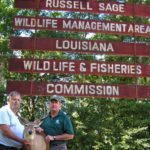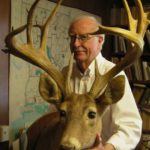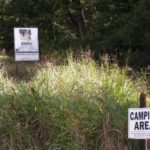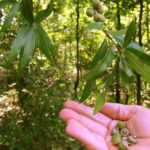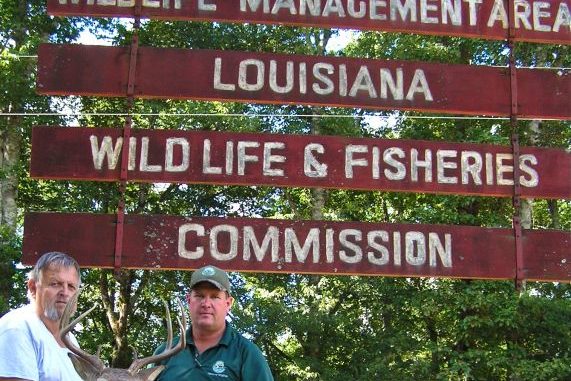
Head to Russell Sage WMA for some public deer-hunting opportunities without having to fight the crowds. Here are some tips for scoring.
Wouldn’t it be nice for deer hunters to find a 22,000-acre tract of hardwood bottomland available for public hunting?
Even nicer would be if the experts who manage it called it “underutilized.”
Add to that good access roads and numerous ATV/UTV trails, and — just for good measure — how about dozens of great restaurants and everything from campgrounds to hotels just a few miles away?
Well, Merry Christmas, deer hunters! There can be such a package under your tree.
And it’s not too late to take advantage of it this hunting season.
Russell Sage Wildlife Management Area located in Ouachita and Morehouse Parish covers 21,948 acres of primarily mixed bottomland hardwoods. Part of the refuge contains a large greentree reservoir for waterfowl, but from one end to the other, there are good places to deer hunt.
And what’s that little package next door? It’s the 10,989 additional acres of Ouachita Wildlife Management Area that shares a border to the south.
Did we mention a good, healthy deer population? While most of the deer are typical management-area deer, evidence of some of the big bucks killed on Russell Sage over the years hang on the walls of the Louisiana Department of Wildlife and Fisheries District 2 office in Monroe.
And District Supervisor Jerald Owens has seen some huge non-typical deer on the property.
“We had a deer that hung in here for years that was one of the biggest non-typical deer I’ve ever seen,” Owens said. “It belonged to someone who worked here, and they took it with them when they left.
“But I still have one in my office that is nearly that big.”
Few details remain about how those deer were killed, but Owens promised there are still deer out there now that would rival this beast.
Often when talking about public hunting areas, the phrase “too many hunters” comes up. Not with Russell Sage.
“In a word, I would say that this WMA is underutilized,” the veteran LDWF area chief said. “It could stand quite a few more deer hunters, especially late in the season.”
While it isn’t known as a trophy buck sanctuary, there are some mighty fine bucks on this area.
One person that knows that for sure is Duke Yates, a retired employee of the Louisiana Department of Wildlife and Fisheries who spent the majority of his career managing the area.
In fact, it’s a good bet he spent more time in the woods there than anyone else over the years. While he “isn’t as mad at them as he once was,” he still hunts regularly and knows the potential for this area.
Want to successfully unwrap this package? Yates agreed to share the secrets to success on this great public tract.
First, he said hunters shouldn’t expect to just walk into the woods and kill a buck.
“You can get lucky on a big deer anywhere, and that includes Sage,” Yates said. “But hunting Russell Sage successfully usually requires a lot of hard work. You have to learn the area you want to hunt, spend time scouting and learn the deer’s habits.
“Those change as the season goes along, and it’s important that you keep up.”
Charlie Booth, the LDWF biologist in charge of the area, agreed.
“You can just look at the map and just pick a spot, but if you are serious, you need to do some scouting. The more the better,” he said. “We don’t hear a lot about the details of what deer hunters are doing because, frankly, those who are successful don’t want to share much information. That’s because, in part, we are so close to so many people.
“If people talk too much, you know what will happen. For the most part they are pretty quiet unless we talk to them coming out from hunting.”
When’s the best time for a big deer on Russell Sage?
“Right now,” Yates said about December and January. “Traditionally, the rut on Russell Sage is the last two weeks in December and the first week in January. What happens is that during the early part of the season, especially around either sex seasons, those really big older deer just lay up all day long unless somebody jumps them. They just don’t stir until after dark.
“But when the rut starts, they get more careless.”
There is another good time, but those times are hard to predict in advance.
“Weather extremes — that gets them moving,” Yates said. “Some of the biggest deer there have been killed during a snow or when there was a heavy fog. The biggest deer I killed there, I killed in a light snow. We don’t get those often. The deer aren’t in as much of a hurry to get back and lay up (during these weather events) for some reason.”
Even then, however, it’s not a shoe-in to tag a mature buck.
“Those bigger deer, when they get 3 to 4 years old and older and are used to living close to town like that, they get pretty sharp,” he said. “You’ve got to be pretty sharp and get a little bit lucky to see them, much less get a good shot.”
There is no way to be sure of exact deer harvest numbers, but the self-reporting permit check tallies plus the daily mandatory checks on the Thanksgiving weekend give a pretty good picture of refuge use.
In 2013, data shows that there were 1,141 gun-hunting trips, 801 bow-hunting trips and 80 muzzleloader hunts logged. A total of 97 deer were reported killed with guns, 16 with bows and six with primitive firearms.
A total of 10,404 trips to the refuge were reported. About half of those were for waterfowl hunting.
Since no stands can be left out overnight and putting out feed for deer is illegal, you’ve got to hunt the old-fashioned way.
Booth recommended looking for tracks, trails, rubs, scrapes — Deer Hunting 101 stuff — and study those areas closely.
Then spend some time in the woods.
Areas where timber cutting has been going on, like around the Highway 80 area and on the East-West Road south of I-20, usually provide good cover for deer. There is plenty of browse and thickets to lay up in.
Where the thickets meet the open woods or spoil banks and other open areas are good places to look for deer sign.
This being a wet year, the browse is really excellent.
In addition to browse, deer have numerous areas where mast-producing trees provide them with what Charlie calls “deer ice cream.”
The browse is lunch and supper, but the acorns are dessert, he said.
Honeysuckle on the spoil banks around the canals and duck areas also provide treats for deer. Some of the spoil banks also have developed a population of cedar trees.
When these are found next to the other woods, they are often a popular spot for buck rubs and trails.
Spend a little time scouting, find the right spot and who knows, maybe you might even get a little north Louisiana snow to bring out the big ones.
